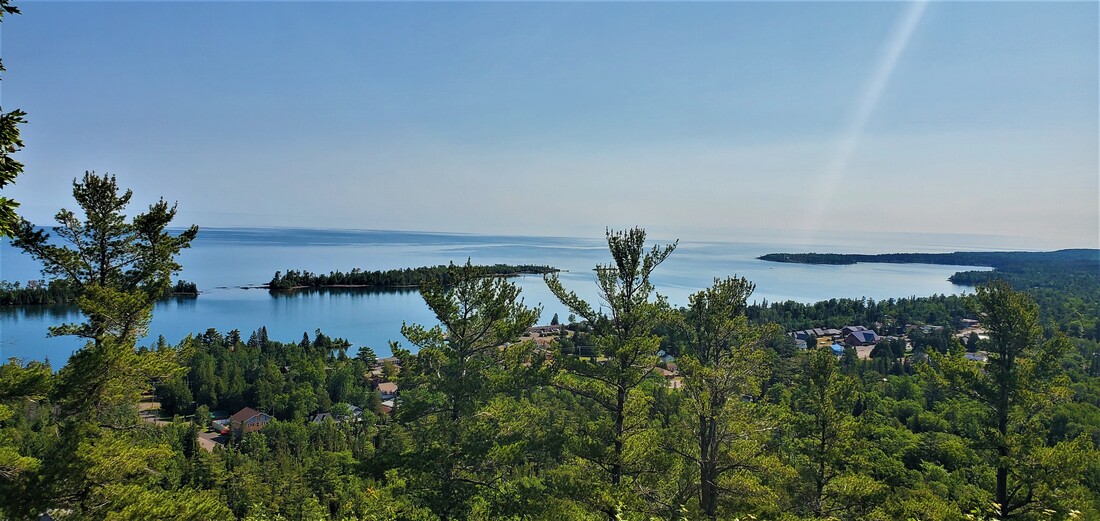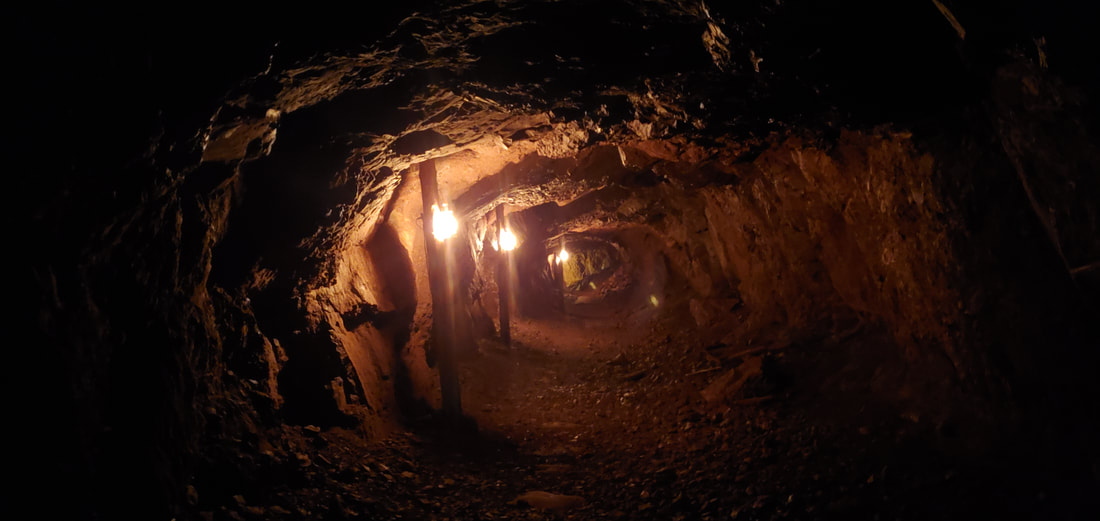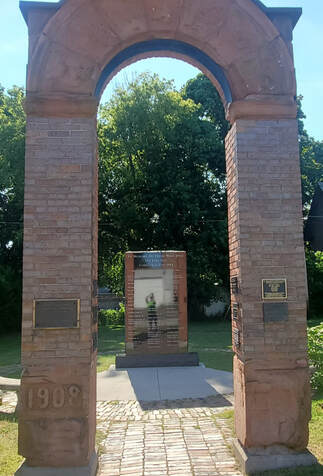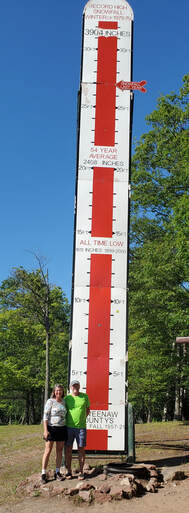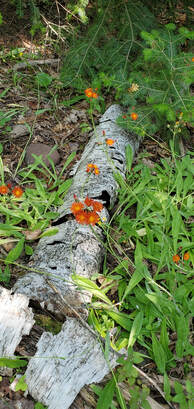Copper Harbor, population 136, sits near the tip of the Keweenaw Peninsula, the northernmost point of Michigan’s Upper Peninsula. The Keweenaw peninsula is a 55-mile, sickle-shaped sliver of land that slices into Lake Superior along its southern shoreline. This had once been copper country, but the mines had shut down long ago and ghosted many a town. Tourism is king now. Not the waves of visitors who favor easy-to-reach parks, but still a steady stream willing to drive to the end of the earth, or at least this portion of it.
As Dianne and I descended the long hill into Copper Harbor on a Thursday morning in July, we found a town going about its own business. There were motels and B&B’s for visitors, but they seemed modest enough in size and décor, and all locally owned. We found a hidden bookstore, Grandpa’s Barn, that rivaled those from the cities. We found the Laughing Loon, the gift shop Jim Rooks and his wife Laurel opened in Copper Harbor and which Hannah now runs since the passing of her father in 2005 and her mother’s retirement.
Looking down from Brockway Mountain above the town, it’s easy to see how the harbor and its lighthouse offered a protected gateway to Lake Superior for shipping 19th and early 20th century copper ore. While French and British colonialists in the 1600s and 1700s lightly mined sites first utilized by Native Americans as long as 7000 years ago, the first big U.S. copper rush gathered steam in the 1840s. Copper mines throughout the peninsula shipped their ore through Copper Harbor, giving it a bustling population of 1300 by 1887.
Dianne and I toured the remains of the Delaware Copper Mine that had operated from 1846-1887. Properly helmeted, we descended 100 feet into the uppermost level of the long-defunct mine. Alongside the stairway ran old rails that once hoisted copper and rubble rock up to daylight.
Seepage from recent rains glistened, dripped, and trickled into the descending shaft, then disappeared into darkened passageways. Electric lights in lantern casings now lit the lateral vein, but they were soft, subdued, and spread far apart along the passageway. They gave off a dim light as copper-colored as the hard-sought ore, offering just enough light to peer into subterranean rooms and into cross-cut passageways. The tops of shafts descending to the lower levels were just barely visible, the shadows revealing the water surface of the seepage that filled the several lower levels—the deepest shaft descending 1400 feet—in the years following the mine’s closure. The topmost level was reasonably dry, as it drains through a distant adit, or horizontal vein that opens to the outside world.
Inside, the temperature was a constant 43 degrees Fahrenheit. A white fungus grew on some of the wooden structures, the result of the damp air. Timbers still supported the bedrock roof. Other bits of timber and rail had been discarded and left at the side of the passage. A few supplies had been left behind as well, including a long, hand-cranked drill used for boring into the rock.
At least two other defunct mines on the peninsula are open to the public.
Mining was dangerous and plagued by labor disputes. Mine owners sometimes adopted brutal tactics against striking miners, hiring violent strikebreakers. Songwriter Woody Guthrie immortalized the 1913 tragedy at Calumet, MI, 30 miles from Copper Harbor, when strikebreakers yelled “Fire!” and barred the only door at Italian Hall where striking miners and their families were celebrating Christmas Eve. Panic ensued, and 73 persons died, half of them children. No one was ever arrested.
Dianne and I found a memorial to the massacred victims in downtown Calumet. Although Italian Hall is no longer standing, the fateful door is preserved, along with the story of what transpired.
Copper mining began to wane after 1916, and by the 1960s was pretty much finished.
Today, the Keweenaw Peninsula offers the great outdoors, not the insides of mines, as its chief asset. South of Copper Harbor lie the Estivant Pines, a stand of 300-year-old white pines stretching 125 feet tall. Fort Wilkins State Park, just a mile up the road from Copper Harbor, preserves the history of an 1844 U.S. fort established in the midst of the mining boom. The Keweenaw Peninsula offers numerous other beaches, parks, wildlife sanctuaries, and lighthouses along the Superior shore. Visitors can stop for a photo-op to measure themselves against a towering mast marking the average seasonal snowfall of 240 inches.
But the highlight of our visit was finding the James Dorian Rooks Nature Sanctuary on Brockway Mountain, named for Jim Rooks by the Michigan Nature Association. The sanctuary includes a 1.2 mile hiking trail looping through a well-shaded woods with occasional overlooks of Lake Fanny Hooe on the edge of Lake Superior. Harsh winds from Superior create a microclimate here, favoring trees and wildflowers more prevalent in Canadian forests. In the valleys the oaks grow tall and sturdy, but on the exposed ridges they are small and stunted, like youthful oaks captured in old gnarled bodies. The understory is rich with ferns. On this July day orange fox-and-cub wildflowers showed off against the white trunks of downed birches.
Hannah recalled that her father drew people to the outdoors of the Keweenaw Peninsula through his passion, his nature-based stories, and “his great, deep voice.”
Jim Rooks used to walk the trails at this sanctuary. And Hannah was going there after we talked.
-- August 2022
